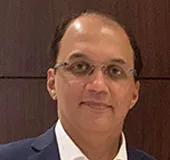.png)
Source Image: Economic Times
On 23 June 2024, Indian Foreign Minister Dr S Jaishankar visited the United Arab Emirates (UAE) and held wide-ranging talks with his Emirati counterpart, Sheikh Abdullah bin Zayed Al Nahyan. The visit, within two weeks of Dr Jaishankar’s reappointment as the Indian EAM, signifies the importance of UAE in India’s foreign policy matrix. In the past four years, the bilateral partners also crossed several significant milestones such as the commencement of the India-Middle East-Europe Corridor (IMEC) cooperation, the 2022 Comprehensive Economic Trade Agreement (CEPA), trade settlement in bilateral currencies and the addition of the UAE debit/credit card on India’s Rupay stack among others.
These bilateral achievements build on India and the UAE’s historic trade ties, dating back centuries. Resultantly, today, India is the UAE’s second-largest trade partner behind China, and the UAE is India’s third-largest trade partner behind China and the United States (US).
Additionally, to facilitate continuity in bilateral cooperation, mitigate global and regional geopolitical turbulence and maintain upward economic growth, the bilateral partners have deepened cooperation for developing the IMEC corridor and further aligning it with their historic CEPA, which was negotiated in a record 88 days. Bilaterally, the IMEC and CEPA will complement each other and bolster India-UAE trade.
Additionally, to facilitate continuity in bilateral cooperation, mitigate global and regional geopolitical turbulence and maintain upward economic growth, the bilateral partners have deepened cooperation for developing the IMEC corridor and further aligning it with their historic CEPA, which was negotiated in a record 88 days.
CEPA and IMEC are the bilateral partners’ bid to future-proof their respective economies by bolstering interregional connectivity and integrating their complementary economies. This article analyses the bilateral economic progress made under CEPA. Further, it looks at the IMEC’s potential to build resilient supply chains for the India-UAE bilateral while bolstering trade under the CEPA.
CEPA cements a promising economic partnership
While the International Monetary Fund (IMF) projected that global trade would decline by 5 percent in 2023, India-UAE bilateral trade grew by approximately 4 percent, contributing 9 percent to UAE’s international trade and 8.15 percent to India’s total trade. Since May 1 2022, India-UAE trade expanded by 16.4 percent and amounted to US$83.64 billion in 2024, compared to US$72.9 billion in 2022. The CEPA eliminates tariffs for approximately 19,600 commodities in three groups of preferential tariff rates—tariff elimination immediate, tariff elimination phased, tariff reduction—for 11,908 Indian tariff lines and Emirati 7,581 tariff lines respectively. The agreement covers 18 commodity sectors, and 11 service sectors with over 300 sub-sectors collectively and will benefit Indian commodities worth US$26 billion, subject to a 5 percent import duty in the UAE. Resultantly, the bilateral trade commodity basket diversified in an economic relationship primarily driven by energy trade. Aerospace manufacturing, metals and alloys, plastics and gems and jewellery contributed US$2 billion, US$1.67 billion, US$0.89 billion and US$8.04 billion respectively to the bilateral trade volume in FY2024, and their sectoral trade volume expanded by 24, 68, 57 and 40 percent respectively between FY2021 and FY2023. Collectively, bilateral trade in these commodities expanded by US$15.56 billion. Due to diversification and expansion in numerous such sectors, India’s non-oil trade crossed US$50 billion in FY2024.
|
India-UAE Bilateral Trade Data 2020-2024 (in US$ billions)
|
|
Year
|
India’s exports
|
UAE’s exports
|
Total bilateral trade volume
|
Total bilateral trade volume (non-energy)
|
Top commodity export groups — Indian (non-energy)
|
Top commodity export groups —Emirati (non-energy)
|
|
2020-21
|
16.68
|
26.62
|
43.30
|
28.67
|
Iron and steel, clothing and textiles, gems and jewellery, consumer electronics
|
Metals and alloys, gems and jewellery, plastics and rubber goods
|
|
2021-22
|
28.04
|
44.83
|
72.87
|
46.36
|
Iron and steel, clothing and textiles, gems and jewellery, consumer electronics
|
Metals and alloys, gems and jewellery, plastics and rubber goods
|
|
2022-23
|
31.61
|
53.23
|
84.84
|
48.46
|
Aerospace manufactured goods, construction materials, gems and jewellery, plastics
|
Metals and alloys, gems and jewellery, plastics and rubber goods
|
|
2023-24
|
35.62
|
48.02
|
83.64
|
57.81
|
Aerospace manufacturing, construction materials, gems and jewellery, plastics
|
Metals and alloys, gems and jewellery, plastics and rubber goods
|
|
Source: EXIM Data Bank, Ministry of Commerce, Government of India
|
Beyond commodity trade, the CEPA aims to facilitate US$15 billion in services trade by 2027. The India-UAE CEPA covers 211 service sectors spanning business, information technology (IT), construction, health, education, tourism, sports, transport etc. The CEPA allows UAE firms to compete with Indian firms on even regulatory grounds for government contracts and public sector works. Under the agreement, Indian businesses can set up in the UAE with 100 percent equity, without the need to partner with a local firm. The bilateral partners also committed to allowing their firms commercially meaningful market access by easing tax rates, land acquisition policies and visa policies for business purposes in their respective countries.
Can IMEC act as a trade catalyst?
Besides services and commodity trade, CEPA also features bilateral cooperation in digital trade. The chapter on digital trade in CEPA aims to establish high-level cooperation between the bilateral partners to further resolve connectivity and regulatory issues for not only furthering India-UAE bilateral digital trade but also their global digital trade ambitions. One of the endeavours in furthering bilateral and international digital trade ambitions for India and the UAE is the IMEC corridor.
IMEC was announced in September 2023, on the sidelines of the G20 New Delhi Summit among partners—India, the UAE, the US, the European Union (EU), Saudi Arabia, Italy, France and Germany. The corridor will have an eastern maritime leg and a northern railway corridor that will bolster connectivity all around, through interconnected energy grids, green hydrogen pipelines and telecommunication infrastructure. The digital connectivity that IMEC aims to build is critical for India’s and UAE’s long-term economic visions and security. The corridor partners will collaborate on laying high-capacity subsea and terrestrial network cables and facilitate 5G connectivity along the corridor to bridge the cross-border telecommunications divide. These developments will further digital trade among the partners’ economies, integrate them and benefit interoperability among their digital payment ecosystems.
IMEC was announced in September 2023, on the sidelines of the G20 New Delhi Summit among partners—India, the UAE, the US, the European Union (EU), Saudi Arabia, Italy, France and Germany.
IMEC holds the potential to synergise physical connectivity infrastructure with regulatory changes and trade agreements. For the India-UAE bilateral relationship, CEPA covers the latter and the bilateral partners’ participation in IMEC covers the former. To further corridor cooperation, an Indian high-level delegation visited three critical UAE ports (Khalifa Port, Fujairah Port, and Jebel Ali Port) in May 2024 and held wide-ranging discussions on bilateral investments, port development, logistics and supply chains. Earlier, in February 2024 Prime Minister Narendra Modi and President Sheikh Mohamed bin Zayed Al Nahyan signed 10 Memoranda of Understanding (MoUs) featuring energy grids and energy storage cooperation, cooperation on digital infrastructure projects and digital payments, a bilateral investment treaty, port and maritime infrastructure development and an agreement on an “Intergovernmental Framework concerning cooperation on IMEC”—all important areas under IMEC and CEPA. Notably, these MoUs further co-align IMEC and CEPA. A remarkable case of the synergistic nature of CEPA and IMEC is the Jebel Ali Port and Free Zone (JAFZA). The Jebel Ali is geostrategically located in the IMEC’s eastern maritime leg and JAFZA’s trade with India has benefitted from CEPA. Indian and India-bound Cargo traffic increased from 400,000 TEUs to 576,800 TEUs with a substantial jump recorded after 2022. The JAFZA will also host the BharatMart, a one-stop destination to showcase India’s exports globally, scheduled to open in 2025.
Conclusion
Over the past two years, CEPA has powered a transformative India-UAE alliance, eliminating tariffs on a wide range of goods and services and diversifying trade. The expanding bilateral cooperation is also based on political trust between both the governments’ highest offices. As Prime Minister Modi leads the NDA government for a third time with a historic mandate, India-UAE bilateral cooperation will find further continuity and go from strength to strength in enhancing trade and bilateral and interregional connectivity. The NDA’s continuity will also bode well for developing the IMEC corridor. IMEC, with its focus on infrastructure development, digital connectivity, and regulatory frameworks, will create a seamless trade route between India, the Middle East, and Europe. This will not only benefit India-UAE trade under CEPA but also bolster their positions as global trade and logistics hubs. The combined efforts of CEPA and IMEC will likely lead to increased trade volumes, market access, and economic growth for both countries.
Dinesh N Joshi is the Chairman Satya Giri Group and President, International Business Linkage Forum (India-UAE Partnership Summit); Chairman, International Business Committee, IMC Chamber of Commerce & Industry and Member, National Executive Committee, FICCI.
Prithvi Gupta is a Junior Fellow at the Observer Research Foundation.
The views expressed above belong to the author(s). ORF research and analyses now available on Telegram! Click here to access our curated content — blogs, longforms and interviews.



.png)
 PREV
PREV


.png)
.png)